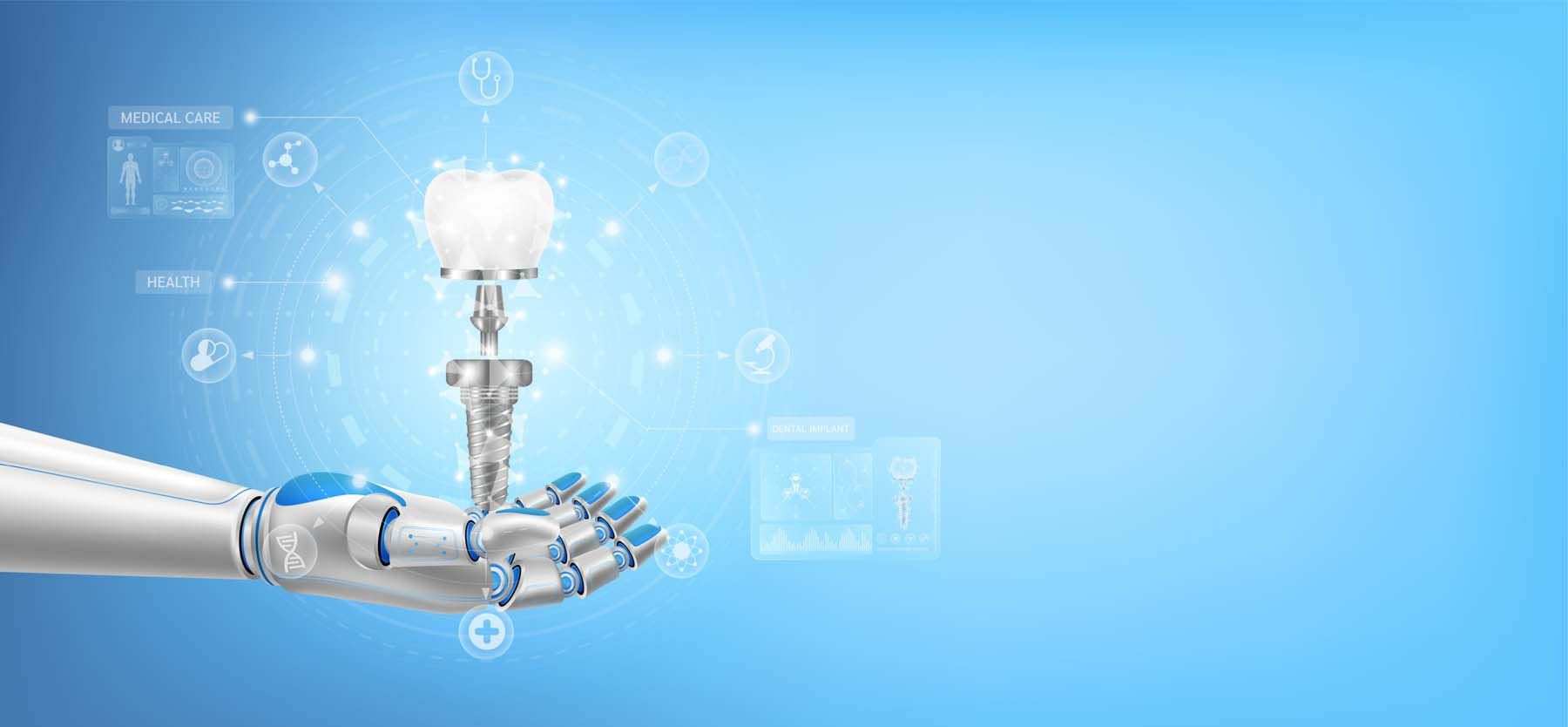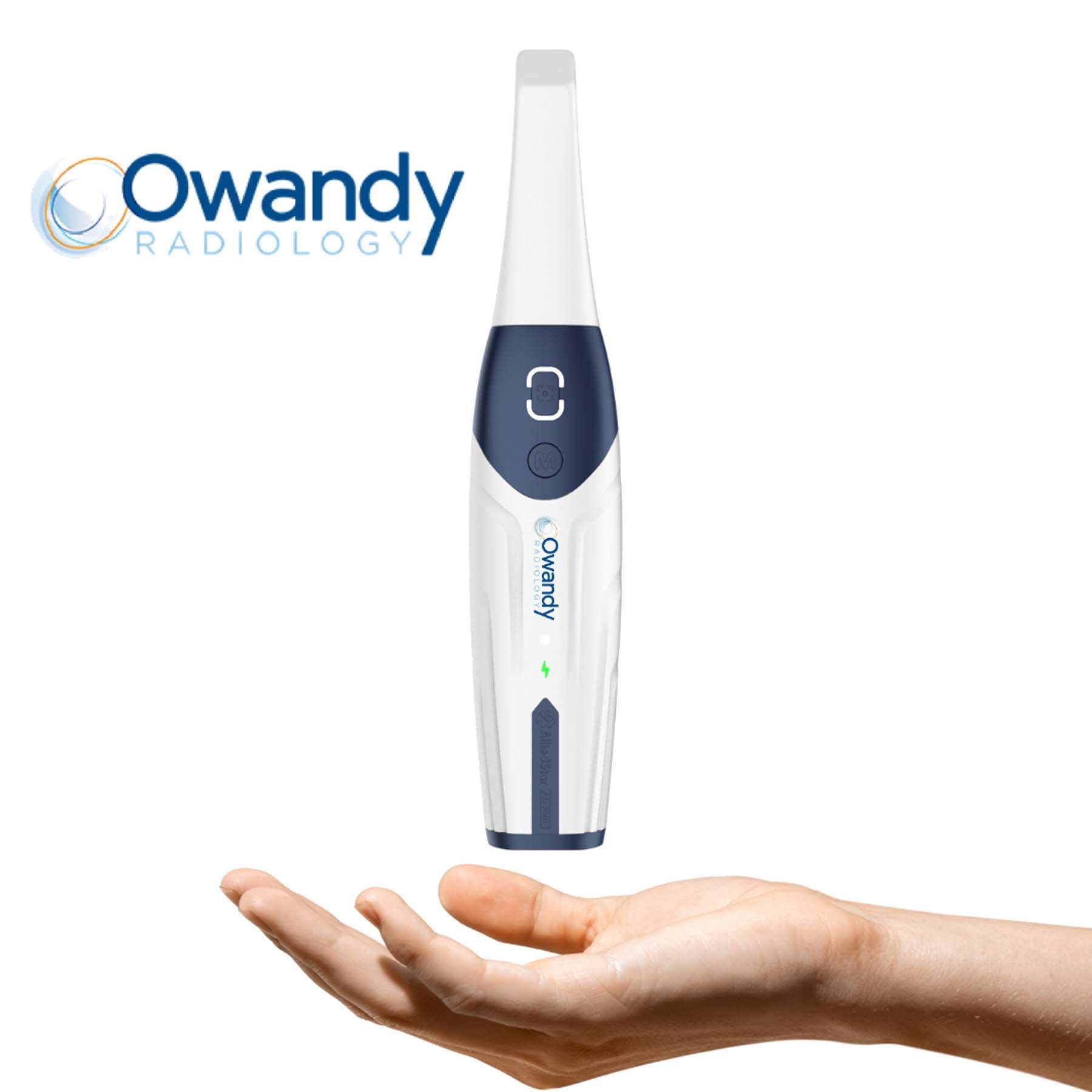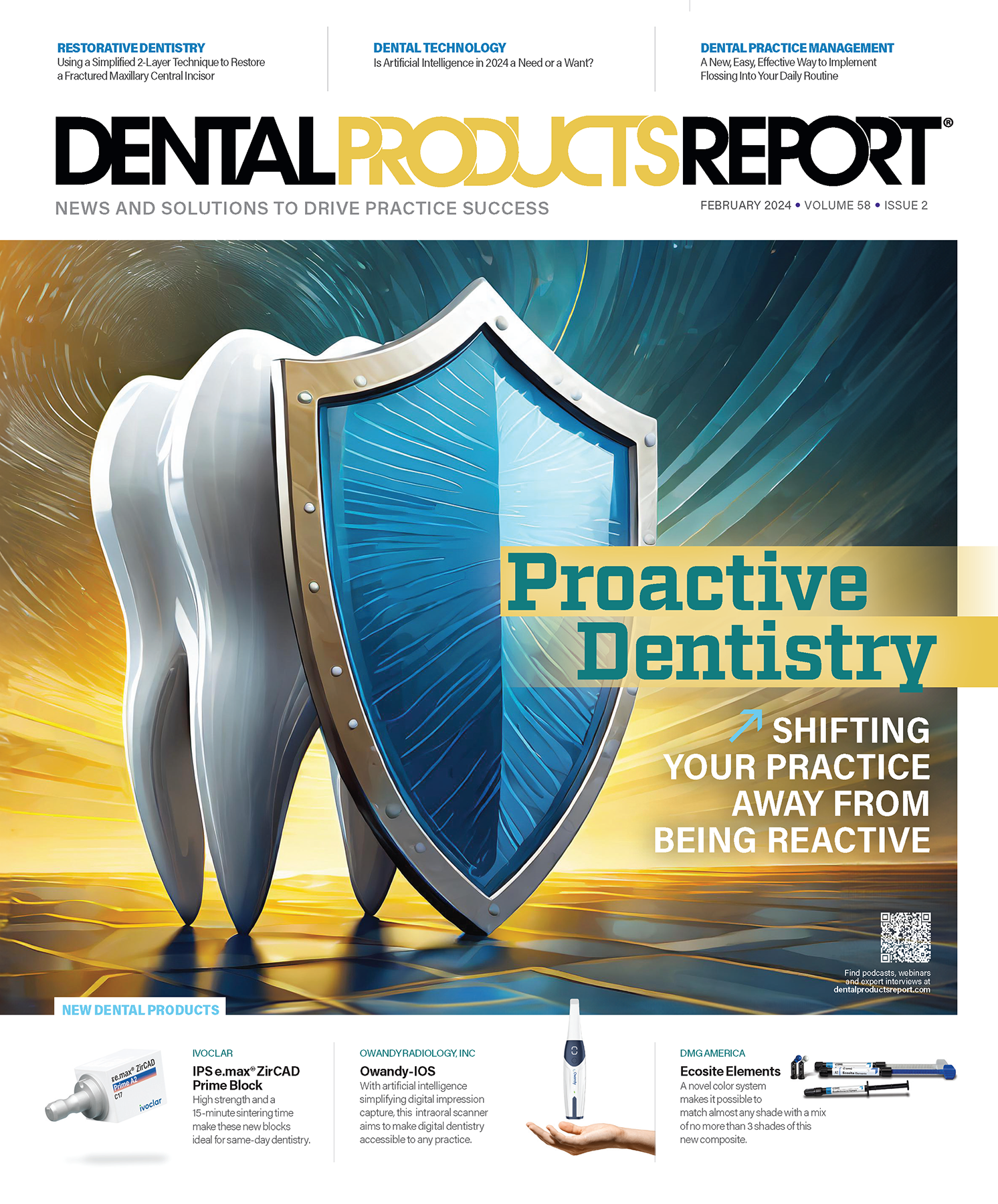Do I Need AI to Do My Job?
Today’s technology can help clinicians make diagnoses, plan treatments, and run practices more efficiently, but some tasks will always require the human touch and experience.
Do I Need AI to Do My Job? | Image Credit: © Adisak – stock.adobe.com

On one side of the aisle, you will find some patients and even clinicians who may not believe the time has come for artificial intelligence (AI) to play a big role in dentistry. On the other side, there are plenty of early adopters and supporters.
Although we can debate how much of an impact AI can and should have when it comes to providing oral health care, by now everyone should realize that the technology has its place. It can help in many areas, without removing the need for human interaction and the brains and hands of a trained clinician.
Lorne Lavine, DMD, founder and president of The Digital Dentist, says AI is already a big part of dentistry in terms of administrative tasks and when it comes to diagnostics and predictive analytics. “What I’m seeing out there [are] 2 main areas where I think AI is being applied,” Dr Lavine says. “One [is] on the clinical front and one [is] on the administrative. So, clinical and nonclinical, it’s there to help. There’s no doubt that people can and probably should take advantage of what it offers. But I think it’s also important to understand that there are some limitations.”
Florian Hillen, CEO of VideaHealth, makes clear that he believes AI technology—including his company’s Videa Dental Assist—has its place but will never take away the need for a clinician to deliver care to patients. “There is a common misconception that AI is intended to replace the expert, which in our industry implies AI will replace the dental clinician. That is not true,” Hillen says. “Dental AI is not a replacement for the clinician; it is a powerful tool that empowers the clinician and helps to drive better patient experiences.”
Dr Lavine likens today’s clinical uses for AI to a second opinion or a second set of eyes when making a diagnosis. “If you use it as a tool, I think the second opinion is great,” he says. “You know, just another set of eyes to look at it and to help your decision-making process. But at the end of the day, you can’t replace 4 years of dental school, your experience with patients, and…if you specialized in 20 years of practice, you just can’t replace that.”
Diagnosis and Treatment Planning
It seems as though a new company or software update pops up almost every week boasting the latest in AI benefits for dentists and their patients. Some forms of the technology have been around for quite some time. In recent years, companies such as Overjet, Pearl, and VideaHealth have received FDA approvals for expanded capabilities in dentistry. These companies can now assist clinicians in diagnosing x-rays and in recommending treatment plans for patients, with CBCT image diagnosis also part of the AI future.
“AI has been around in health care products since the ’50s and ’60s. There was a program developed in the ’90s called Logicon Caries Detector [Carestream Dental] that has been around forever,” Dr Lavine says. “But for whatever reason, in the last 3, 4, or 5 years, it’s taken off and now you have…Overjet and Pearl and all these different companies coming out.”
Overjet features AI algorithms that can detect calculus, cavities, bone loss, and other oral health problems. AI will play an increasingly important role in helping dentists with predictive analytics, as these algorithms will be able to analyze patient data including medical history, lifestyle, and genetics to predict the risk of developing dental problems such as tooth decay, gum disease, and oral cancer, Overjet has reported.
In December 2023, Pearl announced an exclusive partnership with Patterson Dental. The collaboration aims to distribute Pearl’s innovative Second Opinion® and Practice Intelligence® software solutions and integrate the AI pathology detection feature set of Second Opinion within Patterson’s Eaglesoft dental practice management software. Pearl’s Practice Intelligence platform extends AI capabilities beyond the dental chair by synthesizing AI clinical findings with patient treatment data automatically synchronized from practice management systems.
Videa Dental Assist uses AI technology to assist clinicians in diagnosing x-rays and in recommending treatment plans for patients. | Image Credit: © VideaHealth

VideaHealth, meanwhile, recently achieved a milestone with the FDA granting 510(k) clearance for its latest product, Videa Dental Assist. The clearance includes more than 30 AI algorithms, expanding AI detections to cover all the most common dental diseases, according to the company, which has partnered with the large dental support organization Heartland Dental.
“AI technology is revolutionizing dentistry by enhancing early detection and intervention for patients. From identifying routine issues like cavities to pinpointing more serious conditions such as periodontal disease or bone loss associated with illnesses like diabetes, dental AI technologies excel in reading x-rays and learning to discern areas of disease like decay, lesions, and bone loss,” says Heartland Dental Senior Vice President of Clinical Operations and Clinical Director Tim Quirt, DDS, MBA. “While AI empowers dentists with valuable insights, it is crucial to emphasize that it is not a replacement for doctors. It operates as a partner, allowing dentists to validate and strengthen their analyses, ensuring they maintain the ultimate decision-making authority over both diagnosis and treatment.”
VideaHealth’s Hillen predicts the technology will be used by most dental practices. “Using dental AI alongside dentists and hygienists will become the standard of care within the next 2 to 3 years,” he says. “We see that dentists supported by AI are more accurate, efficient, and able to diagnose issues sooner. And they can spend more time interacting with and evaluating their patients vs prioritizing x-ray analysis. AI is also becoming a competitive differentiator. Data shows patients are more open to taking action with an AI-validated diagnosis and are interested in practices using dental AI.
“Dental AI will ultimately impact the adoption of AI in health care at large,” he adds. “This is the first time patients are interacting with health-related AI directly, and as they become more comfortable with those experiences, it will open up their comfort in other areas as well.”
Administrative Assistance
Diagnosis and predictive analytics are headline grabbers when it comes to AI, but the technology also changes the way many front office tasks are accomplished. “From an administrative standpoint, we’re just seeing a ton of stuff, whether it’s appointment scheduling, appointment reminders…basically managing your schedules if you have less waiting time, follow up with patients, and handle a lot of that heavy lifting that we don’t need AI necessarily for…there are third-party programs that have been doing that for a long time, but we’re certainly starting to see a lot of that as well,” Dr Lavine says.
It is important not to lose the individualized touch that has helped many practices grow through friendly relationships with patients. “I was a periodontist for a lot of years, and when they came in, they were greeted by name and they talked about their family, their kids, whatever,” Dr Lavine explains. “They’d talk with the staff as well and they felt like they were being taken care of. We’ve lost a lot of that in medicine and in dentistry.”
Speaking of staff, having everything run smoothly is critical for practice success. Dental SaaS Consulting helps practices incorporate the latest in AI technology and software in efficient ways.
The symbiotic relationship between AI and SaaS not only elevates user experiences but enables businesses to transcend the limitations of conventional software models, says Monique Kramer, CEO and founder of Dental SaaS Consulting. “In this latest AI era, the collaboration of AI and SaaS creates an opportunity for innovation where users can access cutting-edge technologies effortlessly, unburdened by the complexities of software installation and maintenance,” Kramer says. “This narrative allows a paradigm shift, where the strengths of AI and SaaS combined are a future of seamless, intelligent, and accessible software solutions.”
Achieving success in any technology hinges on the end user—the staff, according to Kramer. The pivotal factors for success lie in staff education, staff acceptance, and seamless integration into daily workflows. These areas are “crucial to utilizing the full potential of AI SaaS, streamlining processes, reducing time commitments, and enhancing overall operational efficiencies,” she adds.
Cloud dental software company Planet DDS believes AI is a perfect fit for automating tasks that do not require a clinician’s interpretation or a team member’s decision-making skills to complete.
“The tasks within dental software that are most ripe for automation are those that don’t require human interpretation or judgment to complete. Some examples of tasks that are currently being automated are the posting of electronic remittances from carriers to the patient’s ledger by matching claims to 835s [also known as Electronic Remittance Advice (ERA)] and the automatically generated texts to patients to schedule if an office misses a call,” says Planet DDS CEO Eric Giesecke. “In the future, it is possible that software providers will leverage artificial intelligence to do things like better optimize office schedules based on predictive attendance, similar to what airlines do to ensure that their flights are full.”
Today, most automation is being completed by bots, or programs that imitate users to complete some of these repetitive tasks en masse, Giesecke explains. However, he says the frequency and pace with which bots operate with a software application poses new and unique challenges to the industry.
“Because bots can perform tasks with great frequency, they can have a negative impact on the performance software applications, or how fast pages load for a user,” he states. “Bots can also introduce HIPAA [Health Insurance Portability and Accountability Act]risk since they lack human judgment when deciding how to handle personal health information (PHI). Because of these concerns, we’ll likely see greater throttling of bot access by software providers.”
Automation in dental also is being driven by decision support models applied to dental images. Models are currently reviewing real-time or historical images to aid providers in their diagnoses, Giesecke says. “The applications of these models are truly in their infancy; the next phase of AI in dental will likely involve a deeper integration of these findings, to include the surfacing of treatment opportunities based on x-rays, prior treatment plans, and insurance coverage and eligibility of the patient,” the Planet DDS CEO predicts.
Owandy's latest intraoral scanner, the Owandy-IOS, incorporates AI-enhanced fast-scan technology. | Image Credit: © Owandy Radiology

Owandy Radiology’s latest intraoral scanner, the Owandy-IOS, incorporates AI-enhanced fast-scan technology. The company uses AI to diagnose, help deliver improved patient outcomes, streamline workflows, and improve treatment plan acceptance, says Owandy Radiology Vice President of Sales and Marketing Boris Loyez.
It all starts with a 2D, 3D, or cephalometric image where advanced algorithms automatically reduce metal artifacts when the image is taken (Automar Technology), and advanced AI modules assist in making the images as clear as possible with minimal exposure (fast-scan technology, multiple fields of view: 5x5-12x10 cm), the company says.It could also be an intraoral scan with the new Owandy-IOS, where AI allows it to be fast (60-second full arch), accurate (20 µm), and true to life (true color technology).
“After imaging comes the prosthetic planning with our software, which auto-matches STL and DICOM files in seconds with advanced AI modules for a streamlined workflow in a unique environment [3D scan, imaging, prosthetic planning],” Loyez explains. “The final phase is the export of the files to the practitioners’ lab or their own milling or printing unit (exocad format). Thanks to our technologies, they [clinicians] can focus on spending time with their patients and their practice.”
Which Tasks Will Remain
Loyez says a number of clinician roles will never be replaced by AI, including complex treatment planning, critical decision-making, patient consultation and empathy, and intricate manual procedures involving precise manual dexterity such as complex restorative work, intricate surgeries, endodontics, and prosthodontics that necessitate a dentist’s skill and experience.
Dr Lavine agrees. “I think where AI comes in is the science standpoint, and with parts of it they do a good job of that,” he says. “But as any practicing dentists know, there’s a lot of it that’s art…when you’ve got that explorer tip in your hand and you’re exploring that occlusal pit. It really is an art to decide, ‘Hey, am I going to just watch this? How well did it stick?’ I think there’s no doubt that AI will at some point, try to standardize that as well.”
But for now, there is a lot to be said for clinical judgment. Although AI has gotten quite good at primary treatment plans based on what the information says is the ideal treatment, there are things only a human can interpret.
“Patients are humans, and whether it’s finances or time considerations or esthetics or whatever…they’re not always going to be able to follow through with our recommendations,” Dr Lavine says. “That’s where I think judgment and experience will come into play more, to be able to infer and to be able to decide on a secondary treatment plan or alternative options that AI may not be so good at being able to come up with….It’s going to continue to grow, no doubt, and I think a lot of stuff is just going to get better.”
As the technology improves the capabilities will grow, but Dr Lavine does not ever see the day when there is no need for a dentist’s expertise.
“We’ll never get rid of that clinical judgment component of it, but…the diagnostic part of that, I think, will continue to get better,” he says. “The treatment planning, the predictive analysis, I think all of that will continue to improve over the next 5, 10 years and l think there’s going to be a ton of competition.”
Patients may grow to expect and enjoy AI assistance, but will want a dentist they trust to be in control of their oral health care. “There are so many things that AI can do but I don’t think we’re ever going to replace the operator. The dentist will be the one [who] knows their past history, their dental history, their fears, their time they can sit in the chair…financial considerations,” Dr Lavine says.

ACTIVA BioACTIVE Bulk Flow Marks Pulpdent’s First Major Product Release in 4 Years
December 12th 2024Next-generation bulk-fill dental restorative raises the standard of care for bulk-fill procedures by providing natural remineralization support, while also overcoming current bulk-fill limitations.